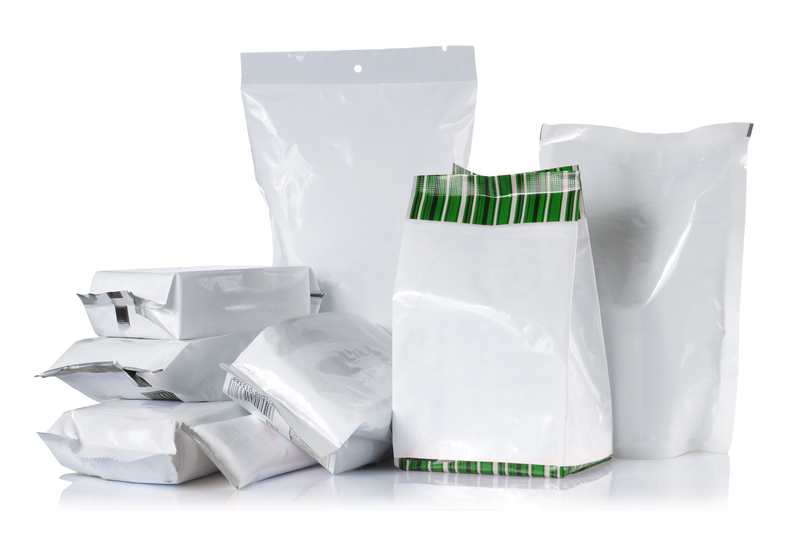The Safest Methods for PPE Waste Disposal at Home
In the wake of global health crises such as the COVID-19 pandemic, proper handling and disposal of Personal Protective Equipment (PPE) at home have become crucial for maintaining hygiene and safeguarding community health. PPE waste disposal at home involves more than simply throwing used masks, gloves, or face shields into the trash. In fact, safe and responsible disposal ensures the prevention of infectious spread--and protects sanitation workers and the environment. In this comprehensive guide, we'll explore the safest and most effective PPE disposal methods for home use, and provide actionable steps to protect your family, community, and the planet.

What is PPE and Why is Safe Disposal Important?
PPE (Personal Protective Equipment) includes masks, gloves, gowns, face shields, and similar items designed to provide a barrier against infectious agents. With increased home use during epidemics, proper PPE waste management has become a public health priority. Negligent PPE disposal at households can lead to health hazards, contamination of water and soil, and heightened risk for waste handlers.
- Prevents the spread of infection: Properly disposed PPE reduces the chance of viruses and bacteria spreading within your home and community.
- Protects waste management workers: Safe handling ensures those who handle your rubbish are not exposed to hazardous materials.
- Helps the environment: Appropriate PPE waste procedures can curb plastic pollution and prevent wildlife risks.
Common Types of PPE Used in Homes
- Disposable masks (surgical/medical masks, N95, FFP2, etc.)
- Disposable and reusable gloves (latex, nitrile, etc.)
- Face shields and goggles
- Protective gowns and suits
- Shoe covers and head caps
Principles of Safe PPE Waste Disposal
When it comes to the safest PPE disposal methods at home, understanding a few essential principles is the key:
- Avoid direct contact: Always assume contaminated PPE is potentially hazardous and avoid touching it with bare hands.
- Use dedicated bins: Set aside specific containers or bags for PPE waste to minimize cross-contamination.
- Seal and label: Secure and clearly label PPE waste when possible to alert others.
- Follow local guidelines: Regulations may vary regionally; always check with your local waste management authority for specific instructions.
Let's delve deeper into the safest steps for disposing of PPE waste at home.
Step-by-Step Guide: PPE Waste Disposal at Home
1. Designate a PPE Waste Zone
Identify a convenient yet isolated spot in your home for disposing of used PPE. This could be a small covered bin placed in your bathroom, hallway, or near entryways for easy access. For family members who may be self-isolating, keep the PPE waste bin inside their room.
- Use a pedal-operated bin where possible, to avoid hand contact.
- Ensure the bin is lined with a strong disposable plastic bag.
- Keep the bin away from children and pets.
2. Proper Handling and Removal of PPE
Practicing correct removal and handling techniques can greatly reduce potential contamination:
- Remove gloves first, turning them inside out as you take them off.
- Handle masks by the straps and avoid touching the front.
- Place all used PPE directly into the PPE bin without shaking them or placing them on other surfaces.
- Immediately wash your hands with soap and water for at least 20 seconds (or use an alcohol-based hand sanitizer).
3. Double Bagging the Waste
Double bagging involves placing the already tied-off PPE waste bag into a second, clean plastic bag before disposal. This extra layer helps prevent accidental leaks and exposure.
- Seal the inner bag tightly before placing it in the outer bag.
- If anyone at home is ill or self-isolating, write 'PPE WASTE' on the outer bag to alert waste collectors.
4. Storing PPE Waste Before Disposal
If there is a risk of contamination, especially if a household member is confirmed to have an infectious disease:
- Keep the double-bagged PPE waste separated from your general waste for at least 72 hours.
- Store the bag in a secure location (e.g., a shed or garage) if possible.
This waiting period helps to deactivate pathogens, as recommended by many public health authorities.
5. Disposing PPE Waste with General Household Refuse
After the recommended storage period, place the double-bagged PPE waste in your regular general waste bin. It is important to not recycle used PPE as these materials can endanger recycling facilities and workers.
- Never place PPE waste in recycle bins or compost bins.
- If your local authorities have special waste collection options for PPE, use those services.
- Wash hands thoroughly after disposing of the waste bag in your outside bin.
Eco-friendly PPE Waste Management at Home
While most PPE is not recyclable due to its material composition and risk of contamination, there are eco-conscious approaches to reduce the environmental impact of PPE waste at homes.
Minimize Single-Use PPE
- Opt for reusable masks: Washable cloth masks can be safely cleaned and reused multiple times, cutting down on disposable PPE waste.
- Use reusable gloves when appropriate: For household cleaning, heavy-duty rubber gloves can be disinfected and reused.
Ensure proper sterilization of reusable PPE--wash fabric masks daily with hot water and soap, and disinfect rubber gloves after each use.
Follow Innovative Recycling Programs
Some communities and companies have started special PPE recycling initiatives for items like masks and gloves. Check with local authorities or look online for collection boxes or mail-back programs provided by environmental organizations. Please remember, only PPE that is not contaminated with infectious material should be submitted for recycling.
Avoid Littering and Public Hazards
- Never dispose of used PPE in drains, on the streets, or in nature.
- PPE littering poses serious health and environmental risks, including polluting waterways and endangering wildlife.
Dispose all PPE waste using the guidelines above to model safe and responsible community behavior.
Special Considerations for Medically Ill or Isolating Households
If someone in your household is suspected or confirmed to have an infectious illness, such as COVID-19, take these additional PPE waste disposal precautions:
- Keep the individual's waste completely separate from other household waste.
- Follow double bagging and 72-hour storage recommendations strictly.
- Notify waste collectors, if possible, about the presence of potentially infectious waste.
- Continue using gloves and hand hygiene protocols when handling waste.
PPE Waste Disposal: Protecting Sanitation Workers
Waste handlers and sanitation workers stand at the front line and are vulnerable to exposure from mishandled PPE waste.
- Always double bag PPE waste and mark it if someone in the home is ill.
- Avoid placing sharps or medical devices (needles, lancets) in household bins--these require special disposal.
- Never attempt to burn PPE at home: Incineration requires specialist facilities to avoid toxic emissions.
Frequently Asked Questions About Home PPE Waste Disposal
Can I recycle PPE such as disposable masks and gloves?
No. Disposable masks, gloves, and similar PPE should never be placed in your home recycling. The potential for contamination and mixed materials makes them incompatible with regular recycling systems.
How should I dispose of reusable PPE that is no longer usable?
If a reusable mask or glove is damaged, dispose of it following the same steps as for single-use PPE: seal in a bag, store safely if contaminated, and dispose with household waste.
Is it safe to burn PPE waste at home?
No. Burning PPE in a domestic setting releases toxic fumes and should be avoided. Stick to recommended PPE waste management for households as outlined above.
Should I use disinfectant on PPE waste before discarding?
Spraying used PPE with a disinfectant before bagging is not typically necessary and could expose you to splashes or aerosolized germs. Focus instead on careful handling and secure sealing of waste.

Key Takeaways: The Safest Practices for PPE Waste Disposal at Home
- Never mix used PPE with recyclables or compostable waste.
- Always double bag used masks, gloves, and other PPE before placing in your general rubbish.
- Keep PPE waste separate, especially if dealing with illness at home.
- Practice rigorous hand hygiene after handling any potentially contaminated materials.
- Pursue reusables and community recycling initiatives where available for a greener approach.
Conclusion
Safely disposing of PPE waste at home isn't just a personal responsibility--it's a vital part of protecting public health and the environment. By following the steps and principles laid out here, you ensure that your household PPE waste does not become a source of infection or pollution. Always check local guidance and keep staying informed about updates in PPE waste disposal methods for households. An informed, vigilant approach keeps everyone safer.
For further information, check with your city's waste management authority or public health department for region-specific advice on safe PPE waste management at home.
